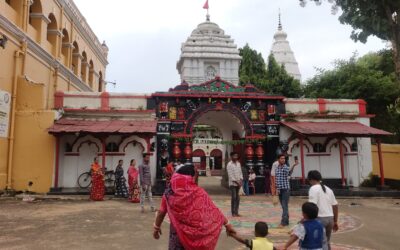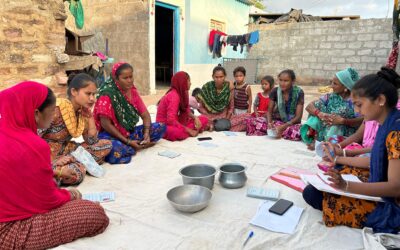As per Hindu mythology, when Sati married Lord Shiva, her father, Daksha was furious. Lord Shiva was a nomad and connected with the earth in unconventional ways. This was enough for Sati’s father to believe that he was not suitable as his son-in-law. Despite Daksha’s disapproval, Sati married Shiva. And over time, Daksha’s grudge towards Shiva grew over various incidents. One night Daksha initiated a grand yadnya (fire burnt for the pooja). Sati decided to attend it. It was her home and her own father after all. She hoped for acceptance this time. Shiva wasn’t in favour of her decision but he respected her too much to stand in her way.
On Sati’s arrival, she saw all the other Gods – Krishna, Brahma, Vishnu, Kuber, Laxmi, and many more. In the distance, she saw her father. It didn’t take her too long to understand that her father wasn’t pleased to see her. He insulted her union with Shiva publicly. Sati’s sentiments were hurt, and she felt she wasn’t worthy of going back to Shiva either. The yadnya invited Sati for a sacrifice. She jumped into it and mortified herself. Shiva lost his Sati that day.
Lord Shiva found out everything that happened. He was enraged beyond limit. He picked up Sati’s burning body and marched towards earth in the darkness of despair. Sati’s body burst into 64 pieces while they made their journey. The 64 Shakti Peet (Shiva + Sati = Shakti) had unlimited, immense power. Shiva created 52 Bherus who took the responsibility to protect each of those 64 pieces. The Shakti Peets then emerged as 64 Goddesses. In the meantime, Sati was reborn as Parvati – creating the everlasting partnership and historical mystique that Shiva and Parvati together generously cascade even today.
The 64 Goddesses and the 52 Bherus were determined to find their purpose and serve the earth, hence they went on a mission to help all those in distress. To remember them from one generation to the other, Gavari is an elaborate memorial theatre festival that holds several scripted acts, performed to foster glory to Goddess Gavari, one of the 64 Goddesses. This is one of the many versions of Sati and Shiva’s union. It is a mythological understanding and a combination of myriad stories passed from one generations to the other.
Celebrations Of The Festival
Right outside Rawach, AMRIT Clinic I witnessed an extravagant display of art in its purest form. The Bhil – Garasiya tribal community was celebrating their 40 days of Gavari. This festival is widely held in southern Rajasthan, also known as the Mewar region.
These acts include a Bhopa (traditional priest and faith healer from the village) and other members who are chosen by the Goddess to worship and commemorate her divinity. In the month of September, during these 40 days of abstinence, the members involved in the worship avoid eating any meat, don’t consume alcohol, avoid having a bath and also sleep only on ground.
The performers are strictly only male members from the village. Women are just spectators. This is because women menstruate and a menstruating woman cannot perform acts of veneration. So, the men dress as women and even as the Goddess.
They take great pride in this adoration ceremony, leaving no decorative ornament behind. Their costumes are magnificently creative and their determination to stay in character gracefully keeps the audience energised and engaged. The Bhopa initiates the ceremony while the rest of the performers gather in a circle around an idol of the Goddess. He asks gavari to grace them with her divine presence and the entire 50-60 members go into a phase of trance. They dance, they sing, and they call her spirit into their soul.
The region of Saira, Pindwara and parts of Gogunda in rural Rajasthan witness stressful deaths due to severe conditions like Silicosis, Tuberculosis and malnutrition throughout the year. And yet, they are at the epiphany of life during festivities, connected in spirit. They forget their sorrows, their troubles, and everything that holds them back from peace for those 40 days. They place their faith in the hands of a seraphic passage toward spiritual wholeness. They devote their lives to what they believe brings life to them.
After witnessing a part of the 6-hour performance of allegiance to their Goddess, I find myself agreeing with what Mr. W. David Kubaik said,
“Whether or not you fancy dramaturgy and archaic myths or eco-mysticism and tribal sociology, one must admit that the Bhils’ Gavari tradition presents the world with a rare epiphaneous art form that is both sensuously stunning and spiritually profound.”

*** If you would like to know more about this festival, you can read Nishita Banerjee’s Gavari: A mystical theatre celebration of the Goddess among Rajasthan’s Bhil tribe and Neelanjana Dutta’s Gavari: A dance drama of Bhils




0 Comments